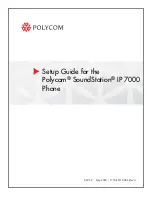
Wi-Fi connectivity (including Wi-Fi frequency bands, Wi-Fi standards and other
features as ratified in IEEE Standard 802.11 specifications) may vary based on regional
availability and local network support. The function may be added via OTA when and
where applicable.
Restrictions in the 2.4 GHz band:
Norway: This subsection does not apply for the geographical area within a radius of 20
km from the centre of Ny-Ålesund.
Please ensure the used power adapters are compliant with applicable country
regulations and international and regional safety standards.
Frequency Bands and Power
This mobile phone offers the following frequency bands in EU areas only and maximum
radio-frequency power:
GSM 900: 35.5 dBm
GSM 1800: 32.5 dBm
WCDMA band 1/8: 25.7 dBm
LTE band 1/3/7/8/20/28/38/40/41: 25.7 dBm
5G NR band n1/n3/n7/n8/n20/n28/n38/n40/n41: 26 dBm, 5G NR band n77/n78: 29 dBm
Bluetooth: 20 dBm
Wi-Fi 2.4 GHz band: 20 dBm
Wi-Fi 5 GHz: 5150 to 5250MHz: 23 dBm, 5250 to 5350 MHz: 23 dBm, 5470 to 5725 MHz: 23
dBm, 5725 to 5850 MHz: 14 dBm
NFC: 13.56 MHz < 42 dBuA/m at 10m
5G connection depends on country, carrier, and user environment.
FCC Regulations
This mobile phone complies with part 15 of the FCC Rules. Operation is subject to the
following two conditions: (1) This device may not cause harmful interference, and (2)
this device must accept any interference received, including interference that may
cause undesired operation.
This mobile phone has been tested and found to comply with the limits for a Class B
digital device, pursuant to Part 15 of the FCC Rules.
These limits are designed to provide reasonable protection against harmful
interference in a residential installation.
This equipment generates, uses and can radiate radio frequency energy and, if not
installed and used in accordance with the instructions, may cause harmful interference
to radio communications.
However, there is no guarantee that interference will not occur in a particular
installation. If this equipment does cause harmful interference to radio or television
reception, which can be determined by turning the equipment off and on, the user is
encouraged to try to correct the interference by one or more of the following measures:
-
Reorient or relocate the receiving antenna.
-
Increase the separation between the equipment and receiver.
-
Connect the equipment into an outlet on a circuit different from that to which the
receiver is connected.
-
Consult the dealer or an experienced radio/TV technician for help.
RF Exposure Information (SAR)
This device meets the government’s requirements for exposure to radio waves. This
device is designed and manufactured not to exceed the emission limits for exposure to
radio frequency (RF) energy. The exposure standard for wireless devices employs a unit
of measurement known as Specific Absorption Rate, or SAR.
The SAR limit set by the FCC is 1.6 W/Kg. For body-worn operation, this device has
been tested and meets the FCC RF exposure guidelines for use with an accessory that
contains no metal and positions the device a minimum of
1.0 cm from the body. RF exposure compliance with any body-worn accessory that
contains metal was not tested and certified, and use of such body-worn accessory
should be avoided. Any accessory used with this device for body-worn operation must
keep the device a minimum of 1.0 cm away from the body.
FCC Note
Changes or modifications not expressly approved by the party responsible for
compliance could void the user’s authority to operate the equipment.
Shielded cables must be used with this unit to ensure compliance with the Class B
FCC limits.




































